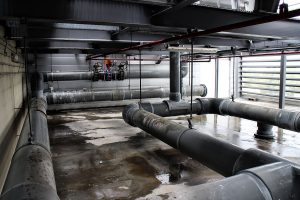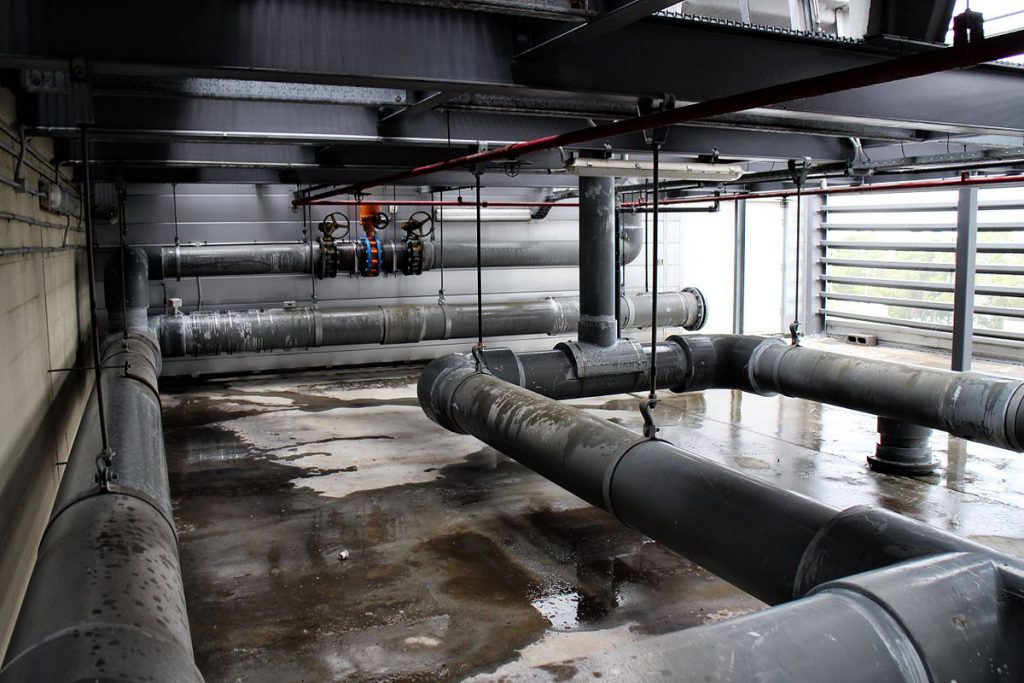
This one from our collaborators at the University of Oregon, “Identification of SARS-CoV-2 RNA in Healthcare Heating, Ventilation, and Air Conditioning Units“. In this work they swabbed a bunch of locations on various air handlers in a healthcare setting and looked for SARS-CoV-2… finding it in about 25% of swabs. Most potentially worrying is the finding of the virus in both supply and return air;
This study demonstrates SARS-CoV-2 RNA contamination throughout several AHUs path of flow, including return air, two filtration stages, and supply air, for multiple floors of the hospital and serves as the first evidence of the potential for SARS-CoV-2 RNA (and possibly virus), irrespective of viability, to enter into and travel throughout HVAC systems.
Abstract below:
Available information on Severe Acute Respiratory Syndrome Coronavirus 2 (SARS-CoV-2) transmission by small particle aerosols continues to evolve rapidly. To assess the potential role of heating, ventilation, and air conditioning (HVAC) systems in airborne viral transmission, this study sought to determine the viral presence, if any, on air handling units in a healthcare setting where Coronavirus Disease 2019 (COVID-19) patients were being treated. The presence of SARS-CoV-2 RNA was detected in approximately 25% of samples taken from nine different locations in multiple air handlers. While samples were not evaluated for viral infectivity, the presence of viral RNA in air handlers raises the possibility that viral particles can enter and travel within the air handling system of a hospital, from room return air through high efficiency MERV-15 filters and into supply air ducts. Although no known transmission events were determined to be associated with these specimens, the findings suggest the potential for HVAC systems to facilitate transmission by environmental contamination via shared air volumes with locations remote from areas where infected persons reside. More work is needed to further evaluate the risk of SARS-CoV-2 transmission via HVAC systems and to verify effectiveness of building operations mitigation strategies for the protection of building occupants. These results are important within and outside of healthcare settings and may present a matter of some urgency for building operators of facilities that are not equipped with high-efficiency filtration.

We need a lot more studies using air samplers capable of catching particles for live virus isolation on cell culture. At this point it’s clear that the stability of detectable RNA is way higher than the stability of actual infectious virus. While work like the above-mentioned is important as a first step to understand indoor aerosol transmission, it’s very possible that there’s no live virus in those samples either.
I also understand that there are logistical hurdles to doing live virus isolation assays as the number of BSL3 labs is limited, but somebody needs to start doing this work of virus isolation sampling in real-world environments (purely in vitro studies using mechanically nebulized virus also only tell you half the story).
Identification of SARS-Cov-2RNA found in ventilation and air conditioning equipment’s is most concern during the pandemic disaster. The sample from ventilators , air conditioning filter evident that SARS -COVID may be airborne and it could be potential risk for public, health workers. This scientific evidence draw more attention Particularly , Highly populated country like India .
Regards
Dr.SIVASAKTHIVEL S
Dept of Environmental Science
Bangalore University
India